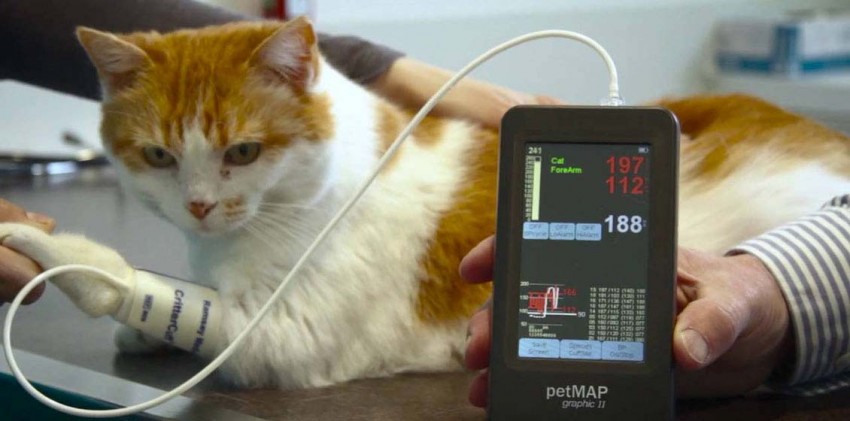Leptospirosis of dogs
 Leptospirosis is a bacterial disease that affects many types of animals and humans. Leptospirosis is rare in cats and often in dogs. Leptospirosis is a zoonotic disease, there is a risk of human infection from an animal. Human leptospirosis is similar in symptoms to the flu and, if not treated, can lead to serious consequences.
Leptospirosis is a bacterial disease that affects many types of animals and humans. Leptospirosis is rare in cats and often in dogs. Leptospirosis is a zoonotic disease, there is a risk of human infection from an animal. Human leptospirosis is similar in symptoms to the flu and, if not treated, can lead to serious consequences.
Causes of leptospirosis in dogs
Leptospirosis is caused by various strains of the genus Leptospira. Different leptospira strains are common in different areas and countries.
Risk factors
Leptospira survives particularly well in warm, humid regions and is often found in stagnant water (for example, in ponds). Wild animals can tolerate leptospirosis. Therefore, dogs with a higher chance of contact with contaminated water, wild animals and their urine are at greater risk (for example, dogs living in rural areas, hunting dogs).
In adult dogs, males, dogs of large breeds, the risk of infection is higher. However, any dog can be infected, since even in cities, wild fauna can tolerate leptospirosis (for example, mice and rats). Most infection with leptospirosis occurs in summer and early autumn. Outbreaks of disease cause flooding.
Leptospira bacteria are found in the urine of infected animals, although they can be found in other body fluids and tissues. Dogs can become infected through contact with contaminated water (both if swallowed and in contact with mucous membranes or damaged skin), or in contact with the urine of an infected animal (for example, through contaminated food, soil, etc.). Through injuries (bites) and eating infected animals.
After the penetration of the bacteria Leptospira into the body, they penetrate into various tissues of the body. The immune system can protect most of the dog’s body, but leptospira can “hide” in the kidneys and then be released into the environment along with urine for many months after infection. Antibiotic treatment may help prevent the long-term release of leptospira in the urine.
Signs and symptoms of leptospirosis in dogs
The severity of symptoms varies and depends on the dog (age, immune response, vaccination status), leptospira strain and other factors. Some dogs may have mild symptoms of the disease or even their complete absence. In some cases, the infection can be fatal.
Signs and symptoms of leptospirosis in dogs may include:
Heat
Pain in the joints or muscles (may manifest as a reluctance to move)
Reduced appetite
Weakness
Vomiting and diarrhea
Discharge from the nose and eyes
Frequent urination, sometimes without urine
Yellowing of the gums, tissues around the eyes and skin (jaundice)
Diagnosis of dogs leptospirosis
The final diagnosis is usually made by detecting bacteria in the samples (usually in the urine), or by detecting increasing levels of antibodies to Leptospira over time, which indicates an increase in the immune response. There are several studies on antibodies to leptospiram, since a one-time test may be positive due to recent exposure to Leptospira (for example, infection without symptoms) or vaccination.
It is also important to note that leptospira can be found in the urine of dogs that do not show symptoms of leptospirosis. It is therefore important to find out whether the symptoms are caused by leptospirosis or other possible causes. A number of other lab tests and x-rays to the dog can help confirm the diagnosis.
Treatment of leptospirosis in Moscow
Antibiotics are used to kill Leptospira bacteria and are often given in two stages: one type of antibiotic for the treatment of primary infection, accompanied by another type of antibiotic to fight leptospira in the kidneys and urine. The sooner treatment starts, the better.
If a leptospirosis-infected dog is diagnosed with renal and / or liver failure, the prognosis for recovery is worse. In these cases, intensive care is vital. Intravenous droppers may be required, medications to reduce vomiting and to treat other effects of renal / hepatic failure. Unfortunately, depending on the severity of the disease, treatment is not always successful in the presence of organ failure.
Vaccination of dogs against leptospirosis. Prevention.
In Moscow and other regions of the country, leptospirosis is common and vaccination of dogs against leptospirosis is mandatory. Leptospirosis vaccine is included in the mandatory set of complex vaccines. See this article for a vaccination schedule for puppies and adult dogs.
The cost of vaccinating dogs at the Constellation Center is one of the lowest in Moscow.
In addition to vaccination, to reduce the spread of leptospirosis spend disinfestation.
In areas where leptospirosis occurs, do not allow dogs to swim in ponds and ponds with running water!
Caring for a dog with leptospirosis
Leptospirosis can cause flu-like symptoms in humans, in some cases leptospirosis in humans can progress to serious illness.



